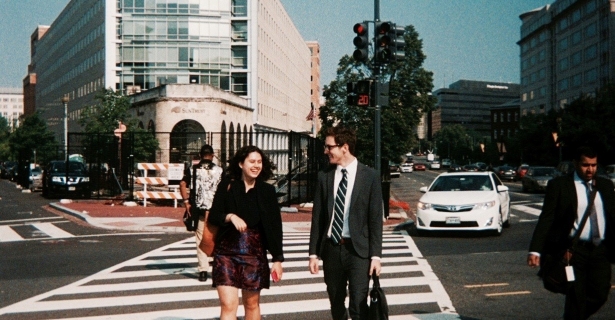Visualizing the Changing Humanitarian Landscape: Implications for PRM
Katie Saviano is interning this summer at the Bureau of Population, Refugees, and Migration in Washington D.C. She is majoring in International relations and Arabic.
After a month of afternoon downpours and exposure to a decidedly aggressive brunch scene, I was finally settled, and able to pull together some of my thoughts on the humanitarian trends that inform the backbone of my bureau.
This summer, I am interning with the Bureau of Population, Refugees, and Migration (PRM) at the U.S. Department of State. PRM is the humanitarian arm of the State Department, and as such, is tasked with providing aid and sustainable solutions for refugees, victims of conflict and stateless people around the world.
The humanitarian field is changing, propelled by the drastic changes in conflict, violence, and foreign policy. Between 2003 and 2014 the number of persons of concern (POCs) worldwide jumped from 21.4 million to 51.4 million. These statistics include both “conventional” refugees — people who flee to a foreign country or power to escape danger or persecution and internally displaced persons (IDPs), those who are forced to flee their homes, but remains within their country’s borders. Increasingly, IDPs are those uprooted by conflict, and of the 51.4 million POC in 2015, 26 million are IDPs. This shift poses an interesting an interesting array of questions for the humanitarian field — IDPs are not granted the resources and rights provided to refugees. And while IDPs are within UNHCR’s mandate, which makes them tangentially connected to PRM’s mission statement, they are not the focus of resources and programs. How will the humanitarian field cope with a changed population of concern? How can programs shift and resources be better distributed to better assist populations that have not crossed borders?
Not only are vulnerable persons more likely to be IDPs, they are also increasingly of urban background, better educated, resourced, and accustomed to higher standards of living. 2/3 of refugees today live outside of refugee camps, which requires a change in the way that we respond to crisis. There is a need for an urban refugee response, as refugees in urban environments are often a blind spot for humanitarian programs. In crisis, UNHCR largely operates under a camp model, which is both financially unsustainable and antiquated. Indeed, UNWRA is currently facing financial crisis and the World Food Program (which supplies food assistance to refugees in camps) is on the verge of bankruptcy. Donors are fatigued and the system is failing.
There is a need for thoughtful programs which address current realities and the urban setting. An inherent theme in a bureau that focuses on refugees is migration. And the drivers that push displacement are shifting. In the years to come, the environment will become the greatest cause of migration and there will be an increase in international migrants.
How does the humanitarian aid model become better equipped to deal with natural disaster response? How can we transform migration; from migration as a failure of adaption into migration as adaption? If resettlement is available to less than 1% of refugees, how does the international community respond to protracted conflict? What are the long term, durable solutions when repatriation is not an option?
These are the questions that I think about over coffee and during afternoon meetings.


Add new comment